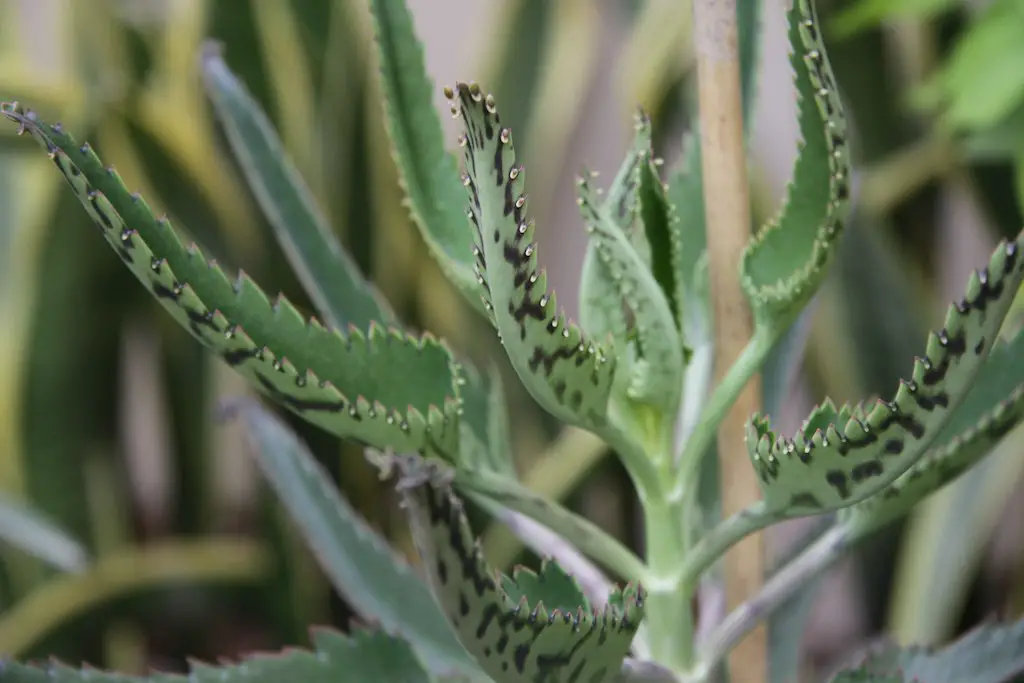Devil’s Backbone, a unique and eye-catching plant, has fascinated gardeners and houseplant enthusiasts for its distinct appearance. Named for its zig-zagging stems that resemble a spinal column, it’s a drought-tolerant plant that brings both color and texture to the garden.
Botanically known as Pedilanthus tithymaloides, Devil’s Backbone belongs to the Euphorbia family. Its common name is derived from the zig-zag arrangement of its thick, fleshy leaves. Besides its structural beauty, the plant produces small, red or pink slipper-shaped flowers, providing an extra dimension of visual interest.
Native to the dry regions of Florida, Mexico, and the Caribbean, Devil’s Backbone thrives in a warm, sunny environment. Its adaptability and low maintenance needs have made it a favored choice for both indoor and outdoor cultivation. Its intriguing appearance and resilience make it an excellent addition to succulent gardens, rock gardens, or as a potted indoor plant.
| Attribute | Details |
|---|---|
| Common Names | Devil’s Backbone, Jacob’s Ladder |
| Botanical Name | Pedilanthus tithymaloides |
| Family | Euphorbiaceae |
| Plant Type | Succulent |
| Mature Size | 2-4 feet tall |
| Sun Exposure | Full to partial sun |
| Soil Type | Well-draining, sandy soil |
| Hardiness Zones | 9-11 |
| Native Area | Florida, Mexico, Caribbean |
Devil’s Backbone Care
Devil’s Backbone is remarkably adaptable and requires minimal care. Its drought tolerance makes it an ideal choice for novice gardeners or those living in areas with water scarcity. Providing it with the right amount of sunlight, well-draining soil, and occasional watering will ensure a healthy and thriving plant.
During the growing season, it appreciates regular watering but can tolerate periods of drought. Over-watering should be avoided, as it can lead to root rot. In winter, it requires even less water, and its light needs can be slightly reduced. Pruning to shape and occasional feeding with a balanced fertilizer will keep the plant looking its best.
Light Requirement for Devil’s Backbone
Devil’s Backbone thrives in full to partial sun. While it prefers a sunny spot, it can also tolerate some shade. However, insufficient light may cause the plant to lose its characteristic shape and color.
Soil Requirements for Devil’s Backbone
A well-draining, sandy soil is ideal for Devil’s Backbone. Standard cactus or succulent mixtures work well. Adding perlite or sand to regular potting soil can enhance drainage.
Water Requirements for Devil’s Backbone
Though drought-tolerant, Devil’s Backbone benefits from regular watering during its active growing season. Allow the soil to dry between watering to prevent over-watering and root rot.
Temperature and Humidity
Devil’s Backbone prefers warm temperatures and low humidity. It is not frost-tolerant and should be protected from freezing temperatures.
Fertilizer
Feeding with a balanced, water-soluble fertilizer every 4-6 weeks during the growing season will promote healthy growth.
Pruning Devil’s Backbone
Pruning can be done to shape the plant and control its size. Always use clean, sharp tools to prevent disease transmission.
Propagating Devil’s Backbone
This plant can be easily propagated through stem cuttings. Allow the cuttings to dry for a day or two before planting in well-draining soil.
How To Grow Devil’s Backbone From Seed
Growing Devil’s Backbone from seed requires patience. Fresh seeds, well-draining soil, and warm temperatures will help in successful germination.
Common Pests & Plant Diseases
Mealybugs and Spider Mites
Mealybugs and spider mites can be treated with insecticidal soap or neem oil.
Root Rot
Caused by over-watering, root rot can be avoided with proper watering practices and well-draining soil.
Common Problems With Devil’s Backbone
Leggy Growth
Insufficient light may lead to weak, stretched growth. Moving the plant to a sunnier location can resolve this issue.
Leaf Drop
Over-watering or exposure to cold temperatures can cause leaf drop. Adjusting watering practices or relocating the plant can prevent further leaf loss.
Pro Tips
- Avoid over-watering; let the soil dry between waterings.
- Provide adequate sunlight to maintain the characteristic zig-zag shape.
- Prune to shape as needed, especially if the plant becomes leggy.
- Be cautious when handling, as the sap may irritate the skin.




